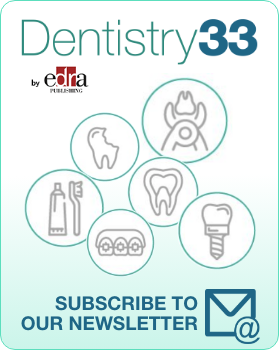
Advanced technologies in oral hygiene sciences: What is the right choice?
Gianna Maria Nardi
Scientific research validates the different technologies dedicated to oral hygiene so that they can give real and safe support to the professional for the correct clinical management of cases, which often present themselves as complex. The complexity can decrease in various aspects. They are often not only clinical, of a systemic nature or typical of the oral cavity, but the complexity is also conditioned by the expectations of the assisted person and by adherence to the operative protocols suggested for home therapy.
The emotional sphere and the sensory perception of the assisted person towards technology cannot be neglected, because it conditions its use, both professionally and at home.
The right choice of what to use must take into account the inclination of patients towards what is perceived by them as an added value of the therapy, what they consider to improve clinical practice. We often choose operating protocols based exclusively on what we consider most appropriate exclusively from the point of view of clinical success.
In non-surgical periodontal therapy, use a scaler that allows you to interact with the choice of a soft mode through the touch-screen system (Comby Touch) and share the choice of intensity with the patient, if they have sensitivity problems or discomfort from fear to feel pain. It makes a difference. The assisted person feels cured of their fragility.
Hypersensitivity is a problem that affects many patients and listening to pain sensations is often not given the attention it deserves. Today we have many technological solutions which, depending on the intensity of the hypersensitivity, can alleviate the annoying symptoms. This includes the use of laser therapy or home desensitizers in the form of toothpastes or gels.
The intraoral video camera is another innovation that helps to magnify clinical situations to record and show the assisted person any dental periodontal lesions for better accountability for home and professional therapy of the lesion itself.
Having intercepted the ICDAS 2 lesion, having received the diagnosis and the indication to prepare the preventive therapeutic plan, being able to offer the patient guided regeneration of the enamel with the use of peptides (Curodont Repair), allows the patient a minimally invasive clinical approach which will allow perceive quality through technological innovation.
Choosing molecules for daily use which, in addition to being effective, have a pleasant taste, give relief to lesions and do not pigment the dental surfaces. This includes using ozonated olive oil (Ialozon), which allows the patient particularly prone to a bright smile, to keep under chemical control the bacterial biofilm.
The choice of toothbrush between manual, electric and sonic must be considered in an absolute way by comparing the sensation of dexterity and effectiveness expressed by the patient. Only what they deem easier and more pleasant to use will bring compliance with home protocols. The same attention is paid to how much, how and which instrument should be used to control the bacterial biofilm in the supracrestal space.
The choice between wire or interdental brushes must be made on the basis of the present morphological situation. An important level of attention must be paid to the patient’s dexterity in conducting home hygiene. In fact, dental floss, despite being an effective aid if used with little dexterity, in the presence of a thin gingival phenotype, can create irreversible traumatic lesions. Moreover the difficulty of use is greater in the case of patients who complain of difficulty if their hands are large and they do not allow easy entry into the oral cavity.
Cosmetic whitening requests must be followed very carefully since expectations are high. There are many variables in terms of the results and the financial resources of each patient are different. But the technological opportunities allow you to have so much choice to accommodate clinical needs and extra-clinical of the assisted person.
 Related articles
Related articles
Oral Hygiene & Prevention 22 March 2024
Home oral hygiene starts with sanitizing the toothbrush and other instruments
The health of the oral cavity is determined by a condition of eubiosis of the oral cavity, ensuring the microbiological balance of approximately 900 different microbial species.
Oral Hygiene & Prevention 27 January 2024
"It is important to take care of your oral health all year round, but especially when you are sick", says Dr. Gene Romo on the ADA website, indicating the advice to give to his patients in these...
Oral Hygiene & Prevention 24 January 2024
Clinical prevention approaches in the management of implant patients
The failure of implant therapy is characterized by the presence of visual signs of inflammation and bleeding on probing, mucositis (PIM) and in cases of peri-implantitis (PI), loss of supporting...
Oral Hygiene & Prevention 05 December 2023
Changing oral hygiene lifestyles between continuous monitoring and innovative molecules
Monitoring home oral hygiene lifestyles is essential since behavioral change is strongly influenced by too many variables that condition its effectiveness and often the motivation carried out by the...
Orthodontics 02 October 2023
Water flosser and oral hygiene in patients with fixed orthodontic appliances
Maintaining good oral hygiene when wearing orthodontic braces is proven to be very difficult, but extremely necessary.
 Read more
Read more
Restorative dentistry 17 May 2024
Advancements in manufacturing technologies have revolutionized the fabrication of dental restorations and prostheses, allowing for enhanced material manipulation and improved geometric precision. In...
The Texas A&M School of Dentistry dental hygiene program, and its students past and present, were celebrated at a luncheon April 26 at the Arts District Mansion in downtown Dallas.
Endodontic Practice Partners (EPP), a Nashville-based specialty partnership organization exclusively focused on supporting endodontics, is proud to announce the appointment of Dr. Phil Wenk to its...
Products 17 May 2024
Alpine Dental of Rockwall celebrates National Children's Dental Health Month this February by providing parents with vital information into best taking care of their children's oral health.















